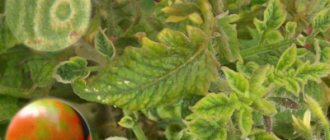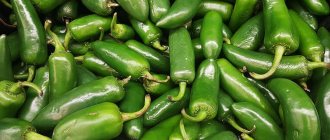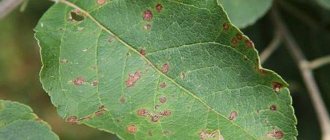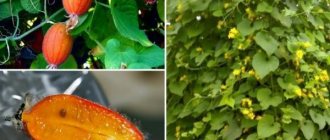For normal development, any plants need microelements. Complex preparations are rich in such substances. Microfertilizers are special fertilizers containing microelements in a form accessible to plants. The composition may contain one element or several.
Single-component drugs include boron. Boron fertilizers are needed by young and adult plants. If the composition contains zinc, such fertilizers are used to increase the water-holding properties of plants. Microfertilizers containing copper can be used on wetlands.
Types and main characteristics of microfertilizers
What types of microfertilizers are there? All existing varieties are classified according to the main element, differing in characteristics, action and purpose.
- Salts of inorganic acids are poorly soluble and are inferior in effectiveness to chelated microfertilizers. They are used on slightly acidic and acidic soils. The main side effects are soil pollution and toxicity.
- Manganese fertilizers are used on chernozems, sandy and peat soils. Well suited for sowing corn, beets and potatoes.
- Humates are complex microfertilizers containing organic acids and microelements. They dissolve well and neutralize toxic substances. They stimulate the growth of crops, but do not contain the entire necessary complex of microelements.
- Zinc fertilizers are suitable for treating carbonate soils where citrus and fruit trees are grown, as well as for areas under beans, carrots and potatoes.
Ready-made microfertilizer complexes contain at least 2 microelements. The most popular compositions:
- "Sizam" with sucrose for seed preparation and foliar treatment of plants;
- “Master” for any soil where grains and flowers are grown;
- "Reacom" for increasing the yield of grains, potatoes, corn.
Molybdenum
Molybdenum microfertilizers are used on forest and podzolic soils, as well as leached chernozems. Under such conditions, molybdenum becomes most mobile and accessible to the roots of legumes, grains and vegetables. If you plan to fertilize acidic soil, liming is carried out first.
Types of molybdenum microfertilizers:
- powder containing up to 17% molybdenum for processing tubers and seed material;
- molybdenum superphosphate for adding between rows;
- Molybdic acid ammonium as foliar feeding or incorporation into the soil before sowing.
In industrial farming, waste from electric lamp production is used to increase yields by 20% or more. According to statistics, thanks to molybdenum microfertilizers, it is possible to increase the yield of legumes by 3 centners per hectare, carrots and cabbage by 25%, and clover hay by 9 centners. In vegetables, the sugar content and amount of vitamins increases, and in legumes and grains the protein composition improves.
Boric
Boron microfertilizers are suitable for sod-podzolic and peat soils. They are used in areas under cabbage, beets, legumes, flax, and fruit and berry plants. Fertilizers reduce the risk of sunburn, pigmentation and leaf spot. There are three varieties of this type of microfertilizers:
- borax and boric acid with a boron content of 11 and 40%, respectively, are used for seeds and plants that have their first leaves;
- boric superphosphate (0.4%) is added into the rows for digging before sowing;
- Nitrate with boron is characterized by universal use, serves as a preventive measure for scab and rot, and improves the quality and taste characteristics of the crop.
Copper
Copper microfertilizers are intended for soils characterized by a deficiency of this element - wetlands and low-lying peat soils. The use of fertilizers with copper increases grain yields by 5–6 times and stimulates the development of fruit tree buds. It is recommended to use it for sowing sunflower, sugar beets and flax. Types of copper microfertilizers:
- copper sulfate with 1% copper and 55% potassium oxide for foliar feeding and seed treatment;
- pyrite (0.6%) in the form of ash.
Thanks to copper fertilizers, the content of vitamin C and sugar in fruits and vegetables increases, and protein in grains.
Chelated
Chelated microfertilizers for plants owe their name to their special claw-shaped form. Each of the molecules in such fertilizers is contained in an organic shell, which allows plants to absorb the fertilizer quickly and efficiently. Chelates are used for garden trees, flowers and seedlings.
Microfertilizer application technology
The technology for using fertilizers has its own characteristics. Much depends on the composition and type of finished fertilizers. For example, the use of products with boron will not be relevant on all soils. Molybdenum preparations are effective on podzolic soils and acidic soil.
Standards and methods of use depend on various factors. Be sure to take into account:
- soil type;
- chemical properties of microfertilizers;
- biological characteristics of cultivated plants;
- type of crop rotation;
- technology for using other means.
Excessive levels of microelements cause negative consequences. When using microfertilizers, it is necessary to adhere to a certain technology. There are 3 ways to perform the procedure: soaking seeds, soil treatment, foliar feeding.
Soaking seed material is an effective and economical method of using drugs. In this case, trace elements will form poorly soluble compounds. For pre-sowing treatment, you can use fertilizers with iodine, iron, copper, and other components.
Fertilizers can be applied directly to the soil. This method gives the desired result when groundwater does not rise above 70 centimeters above the soil surface. Methods of fertilizing depend on the characteristics of microfertilizers. For example, liquid preparations are applied to grooves made around plants.
Research shows that foliar fertilizers are absorbed quite quickly. Microelements applied to the stems and leaves actively penetrate the plant body. Correct application of microfertilizers in the form of foliar feeding is necessary in the following cases:
- underdevelopment of the root system;
- increasing the intensity of photosynthesis;
- loss of activity of the root system;
- combination of pesticide treatment with foliar feeding.
It is necessary to ensure that the solution gets on the leaves and stems. It is preferable to perform foliar feeding in cloudy weather. This is due to the fact that under direct sunlight, microelements do not completely penetrate the green organism.
The listed options for using fertilizers have pros and cons. Experienced gardeners use all options for using drugs at different stages of crop growth.
Invaluable benefits for plants
Fertile soils rich in organic matter almost do not require the use of macro- and microfertilizers. The latter are more often used for feeding calcareous, sandy and poor soils. On such soils, plants become sick due to a deficiency of iodine, vanadium, zinc, molybdenum, boron and other microelements. Cereals and fruits ripen poorly, the harvest is characterized by low quality and taste, and is not stored for long.
Considering the composition of microfertilizers, the benefits of their use are obvious:
- increase the content of sugar, vitamins, starch and proteins in the crop;
- increase the resistance of crops to fungi and harmful bacteria;
- improve tolerance to sunlight and drought, temperature fluctuations;
- enhance the effect of nitrogen, potassium, phosphorus and other beneficial substances used in agricultural technology.
Types of ready-made fertilizers
For more efficient use of fertilizers, modern manufacturers produce multicomponent microfertilizers. The type and scope of application of each of them depends on what elements are included in the composition. The great popularity of ready-made microfertilizers is due to the fact that they have many significant advantages:
Complex effects on plants. After the first treatment, all crop requirements are satisfied.- Convenience during use. There is no need to calculate the dosage and compatibility of all components.
- Ready-made microfertilizers help fill plants with useful substances, as well as increase their immunity to effectively combat various diseases and pests.
Reacom: a universal component
This microfertilizer contains many useful components, the main ones of which are iron and boron. All other substances are in different concentrations. The composition of Reacom microfertilizer includes:
- Magnesium.
- Nitrogen.
- Iron.
- Molybdenum.
- Cobalt.
- Potassium.
- Iodine.
- Zinc.
- Phosphorus.
- Manganese.
- Vanadium.
- Bor.
The main advantages of this feeding include:
- Increased resistance to various diseases.
- Reduced nitrate levels in ripe fruits.
- The versatility of the liquid chelate form promotes rapid absorption of beneficial components.
- The final yield of vegetable crops increases (by more than 30%).
- Reacom combines well with other plant protection products.
- The fertilizer has an adhering, film-forming effect, due to which the fertilizer is evenly distributed over the entire surface of the treated seeds or plant leaves.
Master: multifunctionality
This fertilizer has a wide range of applications. It is used to feed almost all varieties of crops, as well as orchids. It contains components such as zinc, iron, copper and manganese.
The main difference and advantage of the Master microfertilizer is that, despite the high or low pH of the soil, the fertilizer remains in an easily accessible chelated form. Thanks to this, the drug can be used for all types of soils . As an analogue, you can use Micocrop fertilizer.
Complex supplement Oracle
This fertilizer contains the most important components that plants need for normal growth: copper, iron, manganese, boron, zinc. This type of fertilizer is available in liquid form, which is suitable for feeding all crops, as well as flowers.
Competent application on various types of soils
Agronomists introduce microfertilizers carefully, taking into account the deficiency of specific microelements and selecting the appropriate composition, since an excess of even the most useful substances negatively affects the yield and quality of agricultural products.
According to the degree of saturation with microelements, soils are classified into four groups:
- Low-income.
- Average income.
- Highly wealthy.
- Soils with excess microelements.
It is recommended to add microelements only to soils of the first group. For those with average income, foliar feeding and pre-sowing seed preparation are provided. For soils of the third and fourth groups, the addition of microelements is considered unacceptable.
Molybdenum
Molybdenum “works” most effectively on podzolic and forest soils, since it can be present in their composition in a mobile form, which makes it accessible to plant roots. But acidic soils are a real ambush for molybdenum - in them it cannot exhibit its beneficial properties at all. In order for it to become a chelated microfertilizer again (easily available), acidic soils are limed before applying it.
Sometimes liming the soil is enough to release its own reserves of this microfertilizer. If the available molybdenum is not enough, then you can buy the following microfertilizers containing the above element:
- Molybdenum powder. It contains about 15-17% molybdenum. It is used for pre-sowing treatment of seed material, sprinkling the seeds with powder, or making a liquid microfertilizer from molybdenum, in which the seeds and tubers are also soaked before planting.
- Ammonium molybdic acid. This complex contains the largest amount of molybdenum - about 52%. This concentration allows it to be used for pre-sowing application, as well as for foliar feeding. The following dosages are recommended: 0.2 kg per 1 ha when applied before plowing the land. Another type of molybdenum fertilizer, molybdenum superphosphate, is poured into rows during sowing, calculating the dosage according to the standards recommended for phosphorus.
- Waste from electric lamp production. This waste is most often used to fertilize large agricultural fields intended for grains and legumes. Molybdenum increases their yield by 20-30%, which makes it an indispensable microfertilizer for industrial farming.
Methods for applying popular microfertilizers
In order for microfertilizers for grains and other crops to bring exceptional benefits, it is necessary to strictly follow the dosage and recommendations for timing and methods of application. Time-tested standards look like this:
- Boron microfertilizers are dissolved in water at the rate of 1 g per 5 liters of water.
- Molybdenum fertilizers are dosed at the rate of 200 g per 1 ha and applied for digging. If you plan to spray or dust plants, it is enough to take 50 g of ammonium molybdate per 1 hectare of land. For foliar feeding, 100–200 g of fertilizers per 1 ha are used.
- Pyrite cinders are used once every 5 years. It is recommended to use it in the fall for digging or in the spring two weeks before sowing. Copper sulfate is used in a dosage of 1 g per 1 square meter. m. For foliar feeding, you will need to dilute 1 mg of copper sulfate in a bucket of water.
Before using any fertilizer, study the instructions, since the composition may change, and with it the dosage. The optimal approach involves conducting a chemical analysis of the soil and targeted addition of missing microelements.
Manganese fertilizers
Manganese is necessary for all plants. Its average content in plants is 10 mg per 1 kg of dry weight. The removal from the harvest of different crops is 1–4.5 kg/ha. Manganese is a metal with a high redox potential and can participate in biological oxidation reactions. Currently, about 30 metalloenzyme complexes activated by manganese are known. It promotes the selective absorption of ions from the external environment, increases the water-holding capacity of tissues, reduces transpiration, and affects plant fruiting. The optimal manganese content in crop products is 40–70 mg/kg.
Plants may experience a deficiency of manganese in soddy-podzolic soils when pHKCl is greater than 6.0, which is associated with its transformation into sparingly soluble compounds when the reaction environment is close to neutral.
The following manganese fertilizers are used in the Republic of Belarus.
MnSO4 5H2O is a white, finely crystalline salt containing 22.8% manganese. The maximum solubility in 1 liter of aqueous solution is 380 g. Doses for foliar feeding of agricultural crops with manganese sulfate are given in table. 3.
Adobe manganese is a liquid fertilizer concentrate containing 15.3% manganese in chelated form, 9.8% nitrogen and 2.8% magnesium. One liter of fertilizer contains 153 g of manganese, 98 g of nitrogen and 28 g of magnesium. Microfertilizer is produced in Poland.
Adobe manganese is used in a dose of 0.3 l/ha for the first feeding of winter grain crops at the beginning of the active growing season in the spring or the stage of the first node, it can also be used in conjunction with UAN or retardant, and in the second feeding of winter wheat and triticale for highly productive crops (can in a tank mixture with fungicides) in the flag leaf or heading stage, as well as for feeding spring grain crops at the first or second node stage.
Foliar feeding of leguminous crops with Adobe manganese fertilizer is carried out in the budding phase, spring and winter rape – in the beginning of budding phase, fiber flax – in the “herringbone” phase, sugar beets – the first in the phase of 10–12 leaves, the second – after 1–1.5 months after the first at a dose of 0.3 l/ha.
In Belarus, liquid complex fertilizers MicroSil have been developed for pre-sowing treatment of seeds and foliar fertilizing (Table 4).
Table 4. Chemical composition of liquid complex fertilizers MicroSil
| Microfertilizers | Nitrogen | Bor | Zinc | Copper | Ecosil, ml/l |
| g/l | |||||
| For pre-sowing seed treatment | |||||
| MicroSil copper, zinc, boron IS | 50,0 | 6,1 | 6,5 | 7,3 | 12,0 |
| For foliar feeding of plants | |||||
| MicroSil zinc, boron | 80,0 | 30,0 | 46,0 | – | 30,0 |
| MicroSil boron, copper | 130,0 | 40,0 | – | 40,0 | 30,0 |
| MicroSil boron | 150,0 | 55,0 | – | – | 30,0 |
The composition of MicroStim liquid complex microfertilizers is given in table. 5.
Table 5. Chemical composition of liquid complex fertilizers MicroStim
| Microfertilizers | Nitrogen | Bor | Zinc | Copper | Humic substances, mg/l |
| g/l | |||||
| For foliar feeding of plants | |||||
| MicroSteam copper | 65 | – | – | 78 | 0,5–5,0 |
| MicroSteam boron | 5 | 150 | – | – | 0,6–8,0 |
| MicroSteam boron, copper | 65 | 40 | – | 40 | 0,6–6,0 |
| MicroSteam zinc, boron | 43 | 30 | 46 | – | 0,48–6,0 |
| For pre-sowing seed treatment | |||||
| MicroSteam copper | 47 | – | – | 60 | 0,9–6,0 |
| Microsteam zinc, boron, copper | 50 | 6,1 | 6,5 | 7,3 | 0,15–0,6 |
Ecolist mono manganese is a liquid fertilizer concentrate containing 12% manganese in chelated form, 6% nitrogen and 4.5% sulfur. One liter of fertilizer contains 174 g of manganese, 87 g of nitrogen and 50 g of sulfur. When foliar feeding agricultural crops, manganese is used in the same doses and at the same time as Adobe. Ecolist mono manganese is produced in Poland.
In Russia, manganized superphosphate is produced containing 20% P2O5 and 1–2% manganese. It is mainly used for pre-sowing application into rows. The dose is set based on phosphorus.
Application doses of MicroSil and MicroStim are established for specific crops (see Table 3).
Necessity of trace elements
Microelements are essential for plants to grow and develop properly. They actively take part in the biochemical processes that occur in the plant. Without them, it is impossible to guarantee a high plant yield. Each microelement from microfertilizers affects plant growth in its own way. Here is a list of essential microelements and their main tasks in plant growth.
- Copper – actively participates in the formation of nutrients. Copper improves photosynthesis and respiration, significantly increases resistance to external factors
- Boron has an excellent effect on flowering and fruit set. And increases resistance to disease.
- Molybdenum – increases resistance to diseases, increases the level of protein and carbohydrates in the plant. In addition, it improves the retention of atmospheric nitrogen and significantly reduces the amount of nitrates. Legumes require molybdenum to a large extent.
- Manganese – reduces the amount of nitrates and is actively involved in the process of photosynthesis. Manganese is also a component of many hormones. Typically, grain crops, as well as beets and potatoes, need manganese.
- Cobalt is part of most vitamins and enzymes, therefore it actively participates in photosynthesis, metabolic processes, and also significantly increases resistance to external factors and diseases.
- Iron is the main element of chlorophyll, promotes nitrogen fixation, takes part in metabolic processes and in the process of cell division.
- Zinc – improves root growth, helps retain moisture, increases resistance to frost and sultry heat. Also increases starch, protein and vitamin C content.
Feeding plants with microfertilizers
The main fertilizing is done with a predominance of macroelements - nitrogen, phosphorus and potassium. Along with them, the active ingredients may contain microelements, the percentage of which is relatively small. In addition, they are poorly soluble, which means they are inaccessible to plants. They must be added additionally.
The assortment and quantity depend on the vegetative stage of development.
At different periods, plants need a certain set of microelements.
Copper
This type of microfertilizers is most often used on marshy soils and peatlands, since without copper it is almost impossible to obtain high yields on such lands, which usually have an alkaline or neutral reaction. The use of copper microfertilizers is especially necessary for grain crops when cultivating them on this soil . The production of copper fertilizers is most often carried out from industrial waste. They are divided into the following types:
Copper sulfate (copper sulfate). This fertilizer is produced in the form of dark blue salt crystals. Used for pre-sowing treatment of seed material and foliar feeding. It is often used as a liquid microfertilizer, since these crystals dissolve perfectly in water. Copper sulfate is applied once every five years, approximately 1 gram per 1 sq.m.
Pyrite ogracs (pyrites). Externally, this drug resembles ash - it is a finely ground black powder that contains copper. But there is not too much of it, so when choosing a fertilizer containing Cu, it is advisable to give preference to copper sulfate.
Microfertilizers in tablets and chelate form
The features of using microfertilizers in chelated form differ depending on the purpose. A feature of these substances is their good absorption into plants, because they are very similar in composition to organic ones. The chelated form of fertilizers requires dilution of the substance in water. Often, these substances are available in 25 ml sachets, which should be diluted in water. The amount of water varies depending on the type of microfertilizer and the plant to be treated. The amount of water varies from 4 to 10 liters. The plant can be either sprayed or watered.
Microfertilizers in tablet form are easy to store. The concentration of useful substances in tablet form is indicated on the packaging. This substance is easily soluble in water. After propagation, the plants are sprayed and the root system is watered.
A variety of microfertilizers helps not only to increase and improve plant productivity, but also to achieve a tasty and healthy product on your table. A large number of microelements in fertilizers have a role on the plant and have a positive effect on their development, preventing them from dying. At the moment, both a professional agronomist and an ordinary gardener can use any fertilizer available on the market and apply it depending on the requirements and problems encountered in the process of growing crops.
Characteristics of microfertilizers
The most suitable type of fertilizer, which will contain a large number of microelements, is microfertilizers. As a rule, microfertilizers include several microelements. These include zinc, boron, copper, molybdenum, cobalt, manganese and others. Each microelement plays a specific role in plant development. They can provide adequate nutrition to plants during the growth period and help achieve the best possible results in the harvest. Microelements are complementary elements of macroelements, which include nitrogen, potassium, iron, calcium, and phosphorus. In some cases, micronutrients are even superior to macronutrients in benefits.
How to use?
Before fertilizing with chelated fertilizers, you need to pay attention to what the instructions contain and read the description of the drug.
They are designed for different purposes:
- enrichment of soil with useful substances;
- feeding plants by spraying leaves;
- feeding micronutrients to seeds intended for sowing.
See also
Description of the Charodey potato variety, its characteristics and yieldRead











